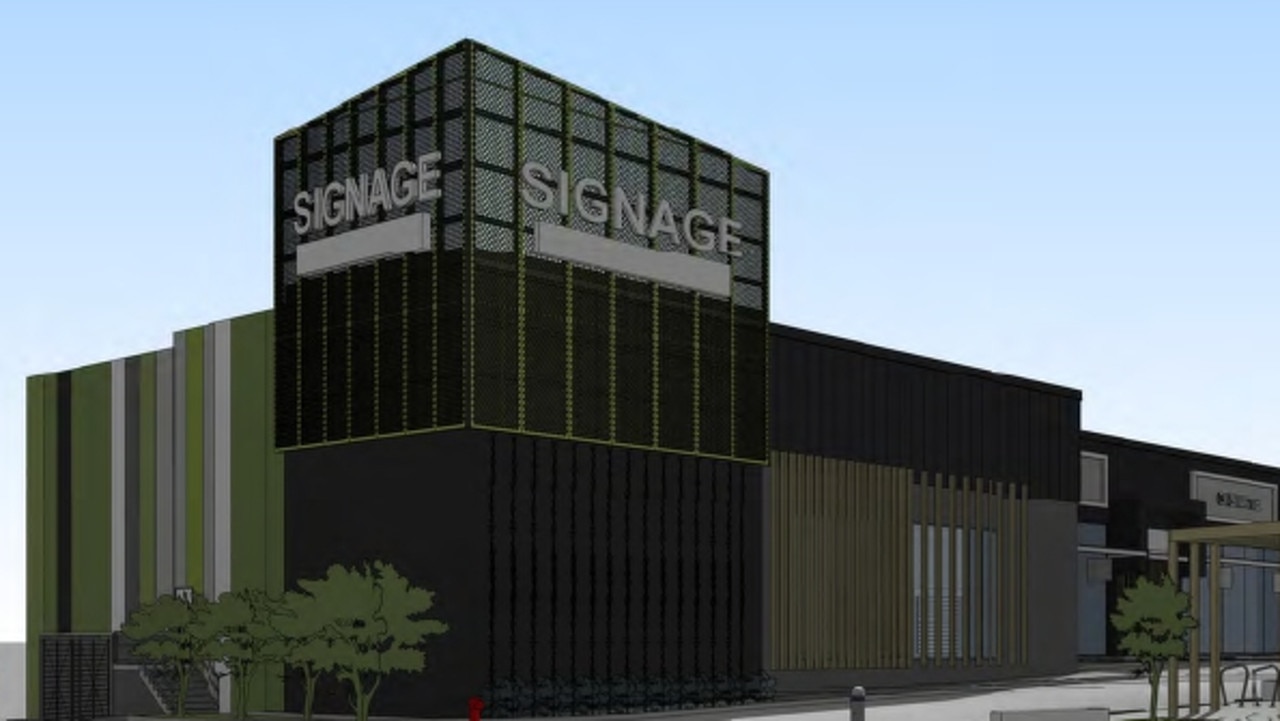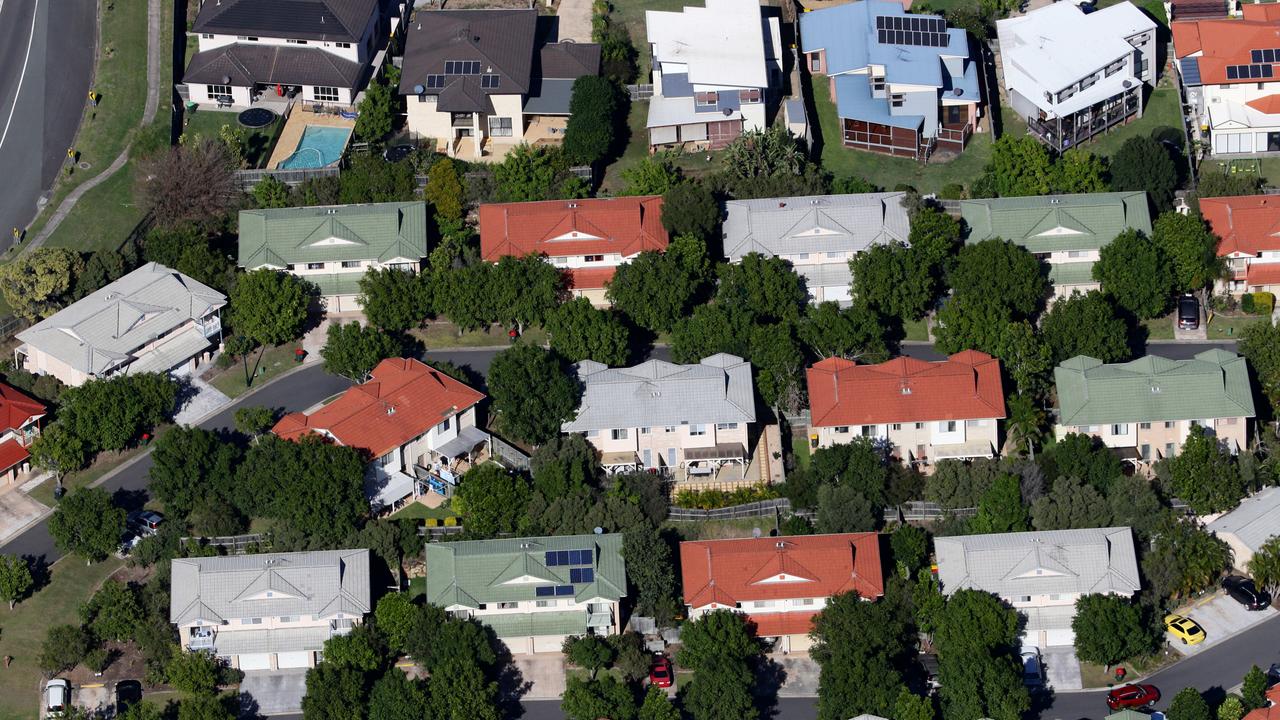Housing crisis: $8b of Qld homes lost as developers pull the pin
Billions of dollars worth of housing stock has been shelved or abandoned, as some of Queensland’s biggest developers exit the market.

Property
Don't miss out on the headlines from Property. Followed categories will be added to My News.
BILLIONS of dollars worth of housing stock has been shelved or abandoned, as some of Queensland’s biggest developers declare they can not afford to build anything new in the next year.
State government red tape, construction union interference, and rising building and labour costs are among the factors forcing local developers to flee the market at a time when new stock is desperately needed.

RELATED:
Revealed: 23 Qld developments to watch in 2023
Buyers rush for ‘sold out’ SkyRidge estate despite 10-year lot supply
Terrace homes sell out in first stage of new marina precinct
New figures from property research firm PRD show 30 per cent or $8.3 billion worth of housing stock — units, townhouses, and houses — due to be built in Greater Brisbane this year has been deferred or abandoned.
Developers are also blaming the CFMMEU for interfering with construction on certain development sites across Brisbane.

In recent months, a group of up to 20 people have been blockading at a development site owned by Pradella in West End, wearing balaclavas and reportedly using intimidation tactics to try to block the company from using a non-unionised crane.
Construction is now underway on stage one of ‘The Lanes’, which is the final development within Pradella’s $1.3b Riverside West End project.

Association of Professional Builders co-founder Russ Stephens said union interference was adding to building costs and delays.
“This kind of behaviour applies to all major construction sites in Australia,” Mr Stephens said. “The smaller developments sit under the radar, but the unions are running the show. The Queensland Labor government has pulled back the powers to bring control and order to construction.

“The builder has to have a good relationship with the unions otherwise nothing would get done.”
Mr Stephens said some builders were deliberately avoiding taking on larger projects because they did not want to attract the attention of the CFMEU.

“It goes as far as organised crime basically running things,” Mr Stephens. “They’re controlling access to sites through thugs who use workplace health and safety to allow them access and we see a lot of builders not want to go near them.
“It’s adding to the cost of apartments for all of us — we’re all paying for it.”
Aria Property Group development director Michael Hurley said conditions had become so challenging, it was unlikely the developer would start any new projects in the next 12 months.

Mr Hurley said while construction costs had increased 60 to 80 per cent, it was also difficult to obtain builders and workers, with many walking off job sites to accept better pay rates at other projects.
“In the Tier 1 and Tier 2 space, it’s incredibly challenging to get a builder,” Mr Hurley said.
“Most are preferring to focus on government projects such as new hospitals, defence, Olympic and infrastructure works.”

Consolidated Properties Group is one of the few local developers getting a residential project of scale out of the ground this year — largely due to its relationship with Australia’s largest privately owned construction company, Hutchinson Builders.
“The problem is, in most cases, the cost of a project is greater than its value and that reflects the building price Hutchies is giving to us, which in turn reflects the cost of his inputs into that price,” CPG chairman Don O’Rorke said.

“He’s saying prices are still escalating at 1 per cent a month and will continue to do so for the rest of this calendar year. So, our challenge is finding projects where reveneues can justify new costs. I’m not expecting to see too many starts over the next 12 to 24 months.
“That’s a really terrible situation because we’ve got 50,000 people a year coming to Queensland. Where are we going to house them?”
Mr O’Rorke said the solutions were for governments at all levels to increase the supply of land, and to increase the capacity of the construction industry — which would be difficult given the wave of public sector work in the pipeline.

“The Olympics has to be built on time and the hospitals and schools also need to be built to cater for our existing population, let alone our growing population,” he said. “It’s only going to get worse before it gets better.”
Analysis from property services firm Charter Keck Cramer has found Brisbane has the highest construction costs — and some of the highest labour costs — in Australia.
Charter Keck Cramer director of research Richard Temlett said that would remain for at least the next decade, with state government infrastructure taking precedence over private housing projects.

“It’s pretty worrying,” Mr Temlett said. “There’s a huge amount of infrastructure being built at the expense of residential construction, and that’s also sucking away labour from housing projects.
“The builders are saying; ‘It’s less risky to get paid by the government to build a hospital or a road’. Government needs to be supporting the industry.”
Cavcorp managing director Damien Cavallucci said he would also struggle to start any new projects in the next 12 months that were commercially viable.

“Anyone starting now is due to non-commercial reasons, which is dangerous,” Mr Cavallucci said.
Stockwell managing director Mark Stockwell is in the same situation.
“If it hasn’t started, it may not start,” Mr Stockwell said. “The costs are increasing so rapidly and we’re not seeing any respite. It’s safe to say we’re doing it for practice.”
Mr Stockwell, who has about a dozen projects across the state, said there was a lack of engagement between councillors and developers when it came to delivering housing supply.

“There are certain rights I don’t have to support political campaigns or candidates that every other Queenslander does,” he said.
“I think there are many other laws to protect good governance through the Local Government Act, but the councillors across Queensland don’t want to talk to me for fear of the Triple-C. We’re the ones building the communities across Queensland.”
It comes as new research from PRD reveals some 32,000 houses, townhouses, units, and land lots were scheduled to commence construction as of June this year, but a significant number of them have been deferred or abandoned.

Only 60 per cent of the apartments scheduled to start construction this year are confirmed to go ahead, with the majority of stock being built in the inner suburbs of Toowong, Hamilton, Bowen Hills, Fortitude Valley, Milton, West End, Woolloongabba, Kangaroo Point, Indooroopilly, and East Brisbane.
PRD national research manager Diaswati Mardiasmo said construction costs and potential challenges such as shortages in material and labour, financing requirements, and local government red tape were impacting development.
“Will this amount of scheduled supply be enough?” Dr Mardiasmo said. “The simple answer is no, but this is what we must work with.
“The next step involves developing innovative strategies to introduce more housing options to the market. This may involve embracing a variety of property types, some of which might be unfamiliar to us at present.”



